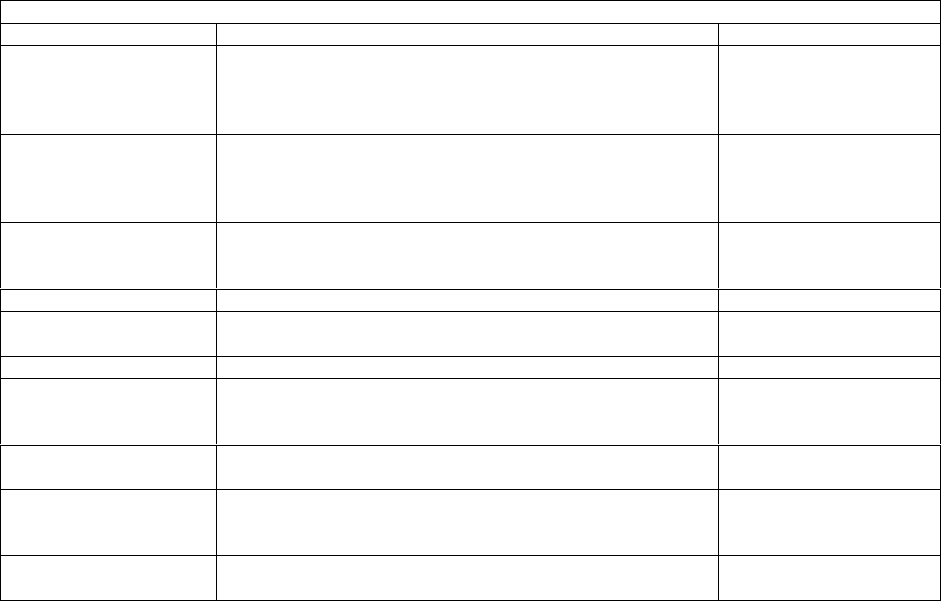
Cyclades-PR4000
Chapter 4 - Step-By-Step Instructions for Common Applications 33
line using the controller. Both CAS and CCS signaling are explained. Which one is used will depend on the
services offered by the telephone system.
Menu
CONFIG=>CONTROLLER=>T1/E1
Parameter Example Your Application
Frame Mode This value is provided by the T1/E1 line provider.
For T1,
ESF
(Extended Super Frame, the most common)
and
D4
are the options. For E1,
CRC4
(the most
common) and
Non-CRC4
are the options.
Line Code This value is provided by the T1/E1 line provider. For T1,
B8ZS
(Bipolar 8 Zero Substitution, the most common) and
AMI
(Alternate Mark Inversion) are used. For E1, the
choices are
HDB3
(High-Density Bipolar) and
AMI
.
Signaling Mode
CCS
for ISDN-PRI (digital or analog remote access).
CAS
for analog, modem-based remote access (usually
used with telephone networks that do not support ISDN).
Clock Mode (CAS only) Slave
Line Build Out Applies only to T1. The T1 service provider should supply
this parameter.
Receiver Sensitivity Short Haul
Companding Mode This value is provided by the T1/E1 line provider.
A-law
is usually used for E1 lines and
u-law
is usually
used for T1 lines.
Signaling Type
(CAS only)
Wink Start or Loop Start for T1 and R2 Digital ITU-T for
E1 are the options
Tone Signaling CAS Only. This value is provided by the T1/E1 line
provider. DTMF is the most common for T1 and MFR2
Compelled is the most common for E1.
Country Signaling Type ? to the options available for each country. This
value is provided by the T1/E1 line provider.
FIGURE 4.3 E1/T1 CONTROLLER MENU PARAMETERS


















